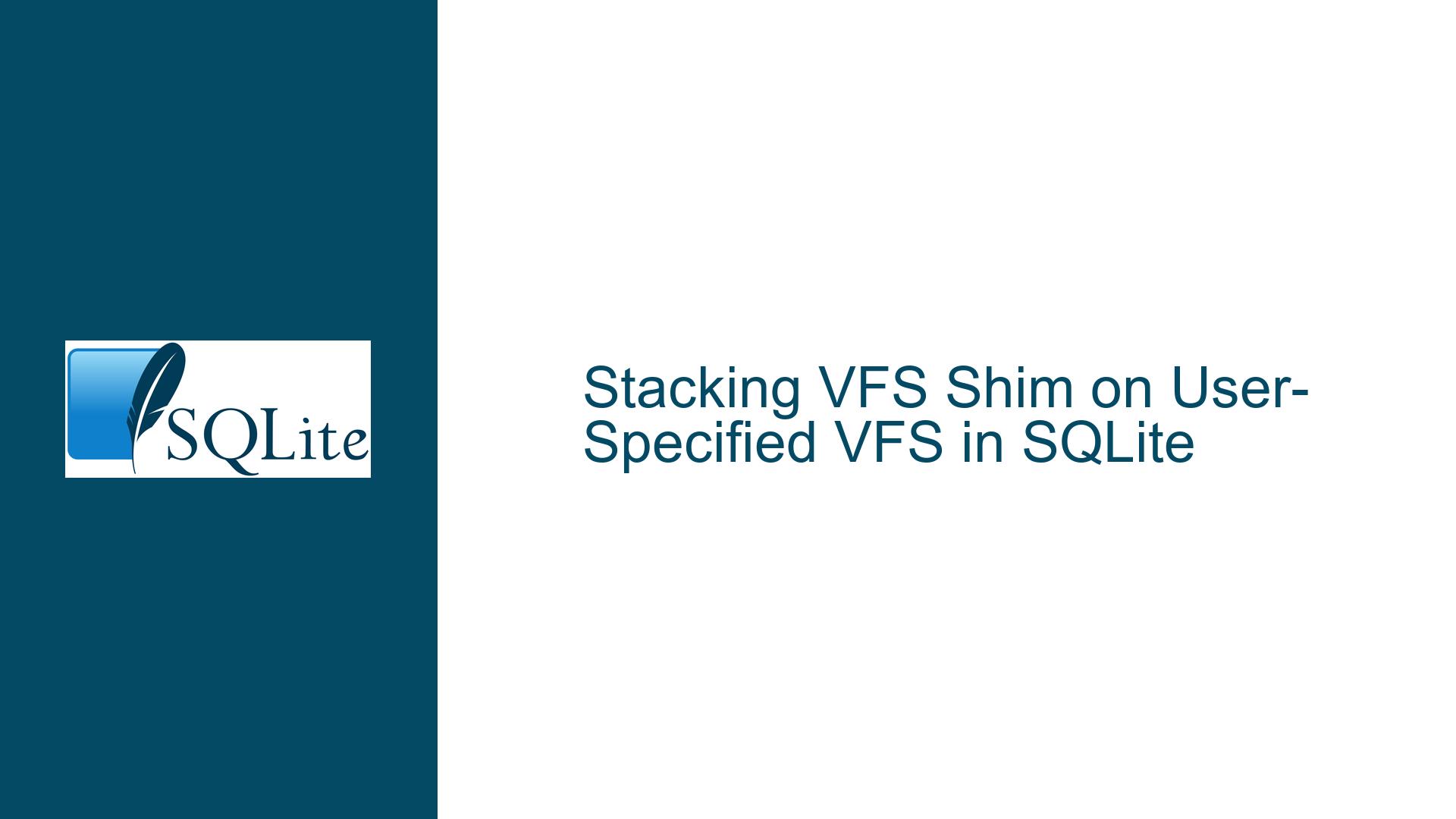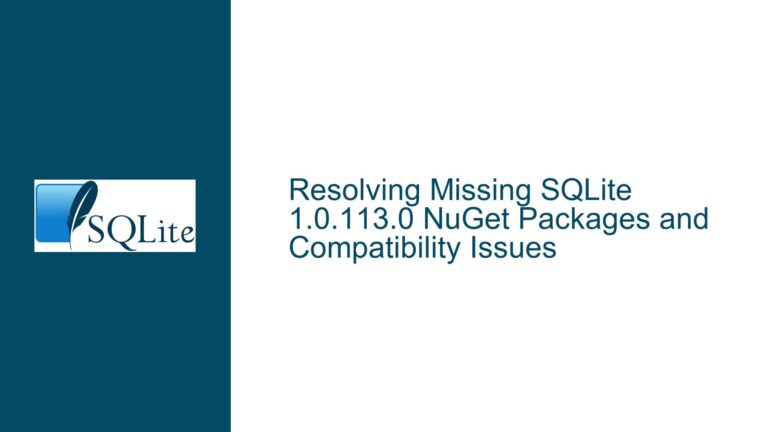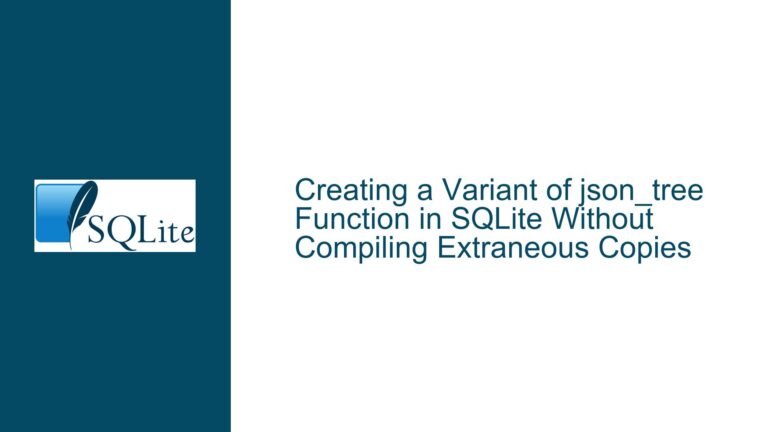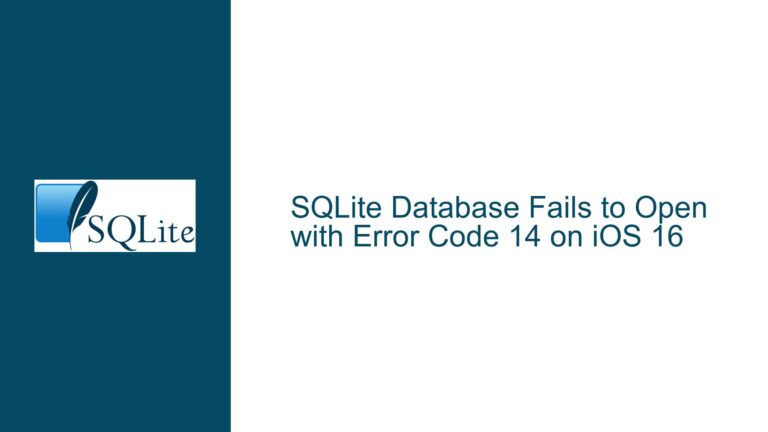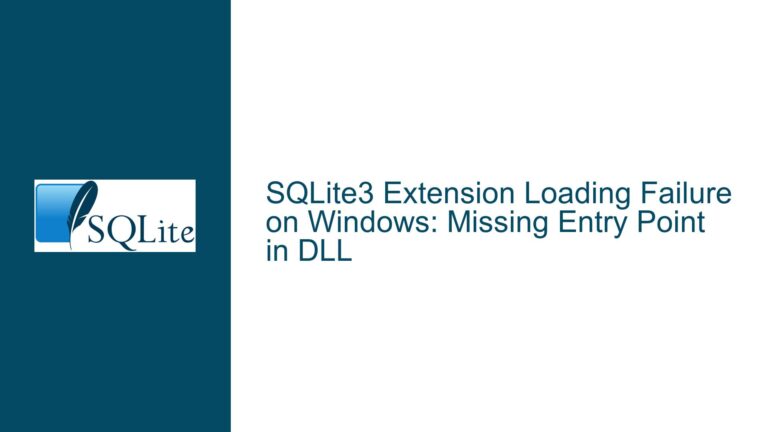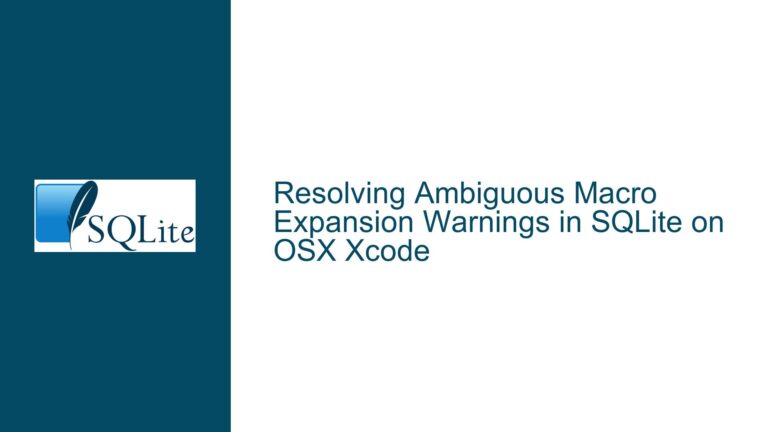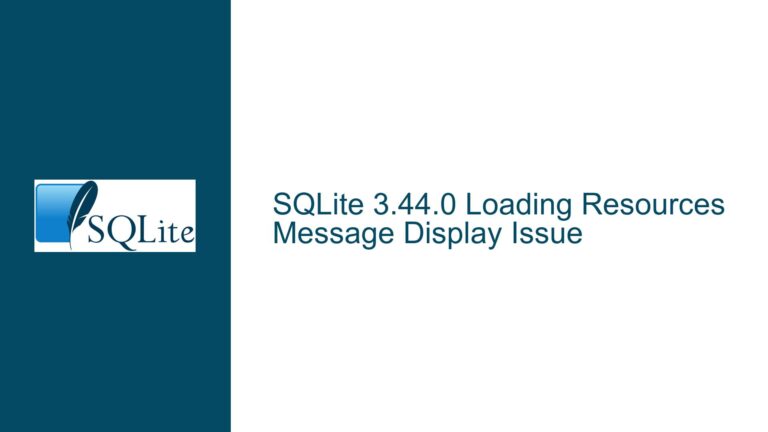Stacking VFS Shim on User-Specified VFS in SQLite
VFS Shim Override Issue with User-Specified VFS in URI
When working with SQLite, the Virtual File System (VFS) layer provides a powerful abstraction for customizing file system operations. A common use case is the implementation of a VFS shim, which acts as a middleware layer between SQLite and the underlying VFS. The shim can intercept and modify VFS operations, enabling features like logging, encryption, or custom I/O behavior. However, a significant challenge arises when a user specifies a custom VFS via the vfs= URI parameter. In such cases, the default VFS shim is bypassed, and the user-specified VFS is used directly. This behavior can be problematic when the shim’s functionality is essential, such as tracing or monitoring file operations.
The core issue revolves around the inability to automatically stack a VFS shim on top of a user-specified VFS. SQLite’s internal handling of the vfs= URI parameter directly resolves the specified VFS without considering any shims that might need to be applied. This limitation forces developers to either sacrifice the shim’s functionality or implement complex workarounds to ensure the shim remains active regardless of the user’s VFS choice.
Intercepted VFS Resolution and Shim Stacking Limitations
The root cause of this issue lies in how SQLite resolves and applies VFS layers when a user specifies a custom VFS via the URI parameter. When a database connection is opened with a vfs= parameter, SQLite internally calls sqlite3_vfs_find to locate the specified VFS. This function searches the linked list of registered VFSes by name and returns the first match. If a VFS shim is registered as the default VFS, it is effectively bypassed when the user specifies a different VFS in the URI.
The problem is exacerbated by the fact that SQLite does not provide a built-in mechanism to dynamically stack shims on top of user-specified VFSes. While VFS shims can be nested manually, this requires prior knowledge of the underlying VFS and careful management of VFS registration and naming. Additionally, the uniqueness of VFS names within the registration list complicates the process of dynamically creating and applying shims.
Another contributing factor is the lack of a standardized API for enumerating or manipulating the list of registered VFSes. Although the SQLite shell provides a vfslist command for inspecting registered VFSes, this functionality is not exposed programmatically. As a result, developers must resort to manual intervention or custom solutions to achieve the desired VFS stacking behavior.
Dynamic VFS Shim Stacking and URI Parameter Handling
To address the issue of stacking a VFS shim on top of a user-specified VFS, a combination of techniques can be employed. The goal is to intercept the VFS resolution process and ensure that the shim is always applied, regardless of the user’s VFS choice. Below is a detailed breakdown of the steps and considerations involved in implementing this solution.
Step 1: Intercepting VFS Registration
The first step is to intercept the registration of user-specified VFSes. This can be achieved by overriding the sqlite3_vfs_register function or by monitoring the VFS registration list. When a new VFS is registered, the shim can be dynamically created and applied on top of the user-specified VFS. This requires maintaining a private list of registered VFSes and their corresponding shims.
Step 2: Cloning and Modifying VFS Shim
Once the user-specified VFS is identified, the next step is to clone the existing VFS shim and modify its properties to match the target VFS. This involves copying the shim’s structure, updating its name, and setting its underlying VFS to the user-specified VFS. The cloned shim must then be registered with SQLite, effectively replacing the original VFS in the registration list.
Step 3: Handling Multiple Database Connections
A critical consideration is the handling of multiple database connections, each potentially using a different VFS. To accommodate this, the solution must dynamically create and manage shims for each unique VFS specified by the user. This requires maintaining a mapping between user-specified VFSes and their corresponding shims, ensuring that each connection uses the appropriate shim.
Step 4: Ensuring Unique VFS Names
Since SQLite requires unique names for registered VFSes, the solution must generate unique names for the cloned shims. This can be achieved by appending a suffix or identifier to the original VFS name. For example, if the user specifies vfs=unix-excl, the shim could be registered as unix-excl-shim. This ensures that the shim can be uniquely identified and applied without conflicting with other VFSes.
Step 5: Automating Shim Application
To streamline the process, the solution should automate the application of shims whenever a user-specified VFS is detected. This can be implemented as a background process or hook that monitors VFS registration and dynamically applies shims as needed. Automation reduces the burden on developers and ensures consistent behavior across all database connections.
Step 6: Testing and Validation
Finally, the solution must be thoroughly tested to ensure compatibility with various VFS implementations and usage scenarios. This includes testing with different combinations of VFSes, shims, and database connections. Validation should also cover edge cases, such as concurrent connections and dynamic VFS registration.
Example Implementation
Below is a simplified example of how the dynamic VFS shim stacking solution could be implemented in code:
#include <sqlite3.h>
#include <stdio.h>
#include <stdlib.h>
#include <string.h>
// Custom VFS shim structure
typedef struct CustomShimVfs CustomShimVfs;
struct CustomShimVfs {
sqlite3_vfs base; // Base VFS structure
sqlite3_vfs *pUnderlying; // Underlying VFS
};
// Shim implementation of xOpen
static int shimOpen(sqlite3_vfs *pVfs, const char *zName, sqlite3_file *pFile, int flags, int *pOutFlags) {
CustomShimVfs *pShim = (CustomShimVfs *)pVfs;
// Perform custom actions before opening the file
printf("Shim: Intercepted file open operation\n");
// Forward the operation to the underlying VFS
return pShim->pUnderlying->xOpen(pShim->pUnderlying, zName, pFile, flags, pOutFlags);
}
// Function to clone and register a shim VFS
static void registerShimVfs(const char *zVfsName) {
sqlite3_vfs *pOriginal = sqlite3_vfs_find(zVfsName);
if (!pOriginal) {
printf("Error: VFS '%s' not found\n", zVfsName);
return;
}
// Allocate memory for the shim VFS
CustomShimVfs *pShim = (CustomShimVfs *)malloc(sizeof(CustomShimVfs));
if (!pShim) {
printf("Error: Failed to allocate memory for shim VFS\n");
return;
}
// Initialize the shim VFS
memset(pShim, 0, sizeof(CustomShimVfs));
pShim->base = *pOriginal; // Copy the original VFS structure
pShim->pUnderlying = pOriginal; // Set the underlying VFS
// Modify the shim VFS name
char zShimName[256];
snprintf(zShimName, sizeof(zShimName), "%s-shim", zVfsName);
pShim->base.zName = zShimName;
// Override the xOpen method
pShim->base.xOpen = shimOpen;
// Register the shim VFS
if (sqlite3_vfs_register((sqlite3_vfs *)pShim, 0)) {
printf("Error: Failed to register shim VFS '%s'\n", zShimName);
free(pShim);
} else {
printf("Shim VFS '%s' registered successfully\n", zShimName);
}
}
int main() {
// Example usage
registerShimVfs("unix-excl");
return 0;
}
This example demonstrates the core concepts of dynamically creating and registering a VFS shim. The registerShimVfs function clones the specified VFS, modifies its properties, and registers it as a new shim. The shimOpen method intercepts file open operations, allowing custom actions to be performed before forwarding the operation to the underlying VFS.
Conclusion
Stacking a VFS shim on top of a user-specified VFS in SQLite requires a combination of interception, cloning, and dynamic registration techniques. By carefully managing VFS registration and ensuring unique names, developers can achieve the desired behavior without sacrificing functionality. While the solution involves some complexity, the benefits of maintaining shim functionality across all database connections make it a worthwhile endeavor. With thorough testing and validation, this approach can be adapted to a wide range of use cases, ensuring robust and flexible VFS customization in SQLite.
